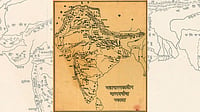The Hindutva alternative to Indian civic nationalism has historically also been impatient with the notion of Indian multilingualism, which it sees as a babel undermining national unity rather than the proud showcase of diversity that civic nationalism celebrates. It has been a long-standing policy plank of the Hindutva movement that Hindi, the language of the northern and central Indian states, where the party has sunk its deepest roots, should be the ‘national language’ of India. BJP MPs have frequently risen in the national parliament to demand that their preference be made law.
India has no ‘national language’; it has two official languages, English and Hindi, with co-equal status in the central government, the courts, and other national institutions. Attempts to promote Hindi nationwide led to stiff resistance from non-Hindi-speaking states in the early 1960s, with language riots claiming lives in the southern state of Tamil Nadu. The compromise achieved at the time—a ‘three-language formula’, which required each Indian to learn English, Hindi and the language of his or her own state, with a South Indian language to be taught in Hindi-speaking states—has been largely honoured in the breach over the last five decades.
At that time, the man who had been the last governor-general of India before it became a republic, and the only Indian to have held that title—Chakravarti Rajagopalachari, universally known as Rajaji—had cautioned that the opposition to English was counterproductive: “Xenophobia is an outmoded form of patriotism. It is a sign of immaturity to feel shame in using a world language in our high affairs. Over and over again the inescapable injustice of imposing Hindi is sought to be covered by a cry against the foreign character of English. English is no more foreign than our legal or parliamentary or administrative procedure, all which have been firmly adopted and confirmed for future use also.” Ambedkar, too, had expressed the view that the utility of a single language nationwide in the administration and the justice system required the continuation of English as a matter of practical convenience.
On the conflation of Hindi with nationalism, Rajaji was trenchant: “The Hindi programme is a disruptionist programme. He who warns ought not to be looked upon as unfriendly. It is a bad day for us all if criticism such as mine is put down to want of patriotism.... Is not just and fair dealing by all the geographically distributed people of this great country as important at least as national pride? Justice is at the root of successful democracy and it is perilous to ignore it. The installation of Hindi as the Union and inter-State all-India language—the honour that now belongs to English by reason of the history of the last one hundred and fifty years—will result in inequality and injustice….”
He also gave short shrift to the argument that Hindi was a language of the Indian masses while English was used only by the deracinated elites: “When the Hindi protagonists are speaking of the masses they are obviously thinking of the masses of the Hindi area only; they ignore the masses in non-Hindi India who are no less in number.” Nationalism, he feared, was being used to conceal the naked self-interest of the Hindi-speakers of the North: “Love of oneself may easily masquerade as love of language, and love of language as love of country. Let us not deceive ourselves or others with chauvinistic slogans.”
But deluding ourselves is a favoured pastime in New Delhi. A brief flashpoint over the language issue erupted again in 2019 when a draft National Education Policy was circulated which sought to make Hindi compulsory in non-Hindi speaking states. After a predictable outcry from non-Hindi-speaking states, the proposal was swiftly withdrawn by the new minister for human resource development (a published author in Hindi). But the larger issues raised by this ill-advised move still cause worry in the South.
The proposal of the MHRD-appointed Kasturirangan Committee, which provoked an uproar in the southern states, stemmed from the contentious clause that declared that “the study of three languages by students in the Hindi-speaking states would continue to include Hindi and English and one of the modern Indian languages from other parts of India, while the study of languages by students in the non-Hindi-speaking states would include the regional language, Hindi and English”. This was understandably perceived by the aggrieved states as part of a recurring tendency by the BJP-led Central government to try and impose the mandatory learning of Hindi among the predominantly non-Hindi speaking peninsular population of the country. In response, the BJP, whose outreach in states like Tamil Nadu and Kerala was emphatically rejected in the recent general elections, was forced to backtrack, including by getting two of its newly inducted Tamil-speaking cabinet ministers, neither elected from Tamil Nadu but appointed to the Rajya Sabha from other states, to publicly offer clarifications (in Tamil).
But this is not likely to be the last we hear of the matter. The draft education policy itself had faced a lengthy delay and the supervision of three successive ministers (Smriti Irani, Prakash Javadekar, and Ramesh Pokhriyal). When it was finally released with cabinet approval in August 2020, Tamil Nadu Chief Minister Edappadi Palaniswami, an ally of the Central government, was quick to reject even the three-language policy proposed in it and to insist that his state will not deviate from its two-language policy. “Tamil Nadu will never allow the Centre’s three-language policy,” he said in a statement. “The state will continue with its dual language policy (of Tamil and English).”
Since the Modi victory in 2014, Tamil Nadu has both publicly and officially protested, on multiple occasions, attempts to impose Hindi and Sanskrit on Tamil people. Though the ruling AIADMK party relies on the Central government’s benevolence for its survival, it is all too conscious that the language issue is felt viscerally by the people of the state. Any weakening of the existing stand will be exploited by the rival DMK party, whose leader M.K. Stalin had accused PM Modi of trying to relegate people who do not speak Hindi to second-class citizens in their own country. So, the mere omission of the earlier formula that would have made Hindi compulsory has not proven enough to assuage the fears even of the BJP’s allies in Tamil Nadu, let alone its adversaries.
But the issue here is actually much larger than the New (or Newer) Education Policy. On the surface, the issue at hand appears to be the government’s attempt to implement the ‘three-language formula’, a guideline that was formulated in 1968 to ensure the equitable pan-Indian distribution of at least one common language—and, therefore, help promote ideals like national unity and integration, but also for practical purposes—such as creating a widely understood common language (either Hindi or English) that citizens would use to deal with their government.
But in the five decades since, successful implementation has largely failed across the country, for two divergent reasons. At an ideological level, in states like Tamil Nadu, with its proud history of Dravidian subnationalism, the question of being required to learn a northern language like Hindi has always been contentious, with anti-Hindi agitations a recurring episode in the state since 1937. In the northern states, there is simply no demand for learning a southern language, and so no northern state has seriously implemented the three-language formula.
The current reality is that most students in the southern states (with the exception of Tamil Nadu) continue to learn Hindi as either their second or third language. But look elsewhere in the country, and one finds very few instances of a student learning either Malayalam or Tamil, or even having the option to do so, as part of their school curriculum. This, in turn, is complemented by other problems, such as the lack of local language options for exam-goers of many of our national competitive exams. In 2018, I had to intervene to get Malayalam reinstated as one of the language options for Railway recruitment examinations.
One solution is to focus on the improved implementation of the ‘three-language formula’ by ensuring that it is both flexible (and therefore allows alternate options for students who do not wish to learn Hindi) and equitable (in that it ensures the availability of southern languages in the North and vice versa).
And then there are practical issues. While a Malayali or Tamilian can see the practical advantages of learning English as a vehicle of empowerment and personal advancement, she does not always see the same advantage in learning Hindi. For the native Hindi speaker, his language is an element of his identity; his advocacy of Hindi is cultural and emotional. A southerner who does not see Hindi as part of his identity needs a good reason to acquire mastery of an unfamiliar tongue. But if the BJP is trying to provide him one, it’s the wrong one.
Compulsion is rarely a good argument in a democracy. But the real fear is far more fundamental: that the advocacy of Hindi is merely the thin end of a more dangerous wedge. It has more to do with the ideological agenda of those in power who believe in a nationalism of ‘one language, one religion, one nation’, or ‘Hindi–Hindu[tva]– Hindustan’. This is anathema to those Indians who grew up and believe in a diverse, inclusive India whose languages are all equally authentic. The Hindutva brigade’s attempts to impose cultural uniformity in India will be resisted staunchly by the rest of us; the opposition to Hindi is based on our fear that such cultural uniformity is really what the advocacy of this language is all about.


























